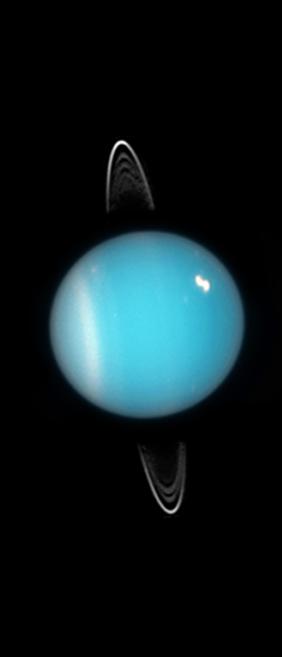Glossary term: Ice Giant
Description: In the Solar System there are four giant planets: Jupiter, Saturn, Uranus, and Neptune. The last two, Uranus and Neptune, are known as ice giants. They have solid rocky cores surrounded by a thick layer of water, ammonia, and methane. These chemicals are in a strange, high-pressure state of matter: not quite solid, not quite liquid. The outer atmosphere of both planets is a thick, puffy layer of hydrogen and helium.
In the early Solar System, in the regions far from the Sun, it was cold enough for water, methane, and ammonia to freeze into ices. Here "ices" is a general term for frozen chemicals made of molecules. The young planets Uranus and Neptune accreted these ices due to their gravitational pull. Because these ices were the source of such an important component of these two planets, they were named the ice giants.
Related Terms:
See this term in other languages
Term and definition status: This term and its definition have been approved by a research astronomer and a teacher
The OAE Multilingual Glossary is a project of the IAU Office of Astronomy for Education (OAE) in collaboration with the IAU Office of Astronomy Outreach (OAO). The terms and definitions were chosen, written and reviewed by a collective effort from the OAE, the OAE Centers and Nodes, the OAE National Astronomy Education Coordinators (NAECs) and other volunteers. You can find a full list of credits here. All glossary terms and their definitions are released under a Creative Commons CC BY-4.0 license and should be credited to "IAU OAE".
Related Media
Uranus in natural colours
Credit: NASA/JPL-Caltech credit link
License: PD Public Domain icons
Uranus with rings
Credit: NASA, ESA, and M. Showalter (SETI Institute) credit link
License: PD Public Domain icons
Neptune
Credit: NASA / JPL / Voyager-ISS / Justin Cowart credit link
License: PD Public Domain icons











